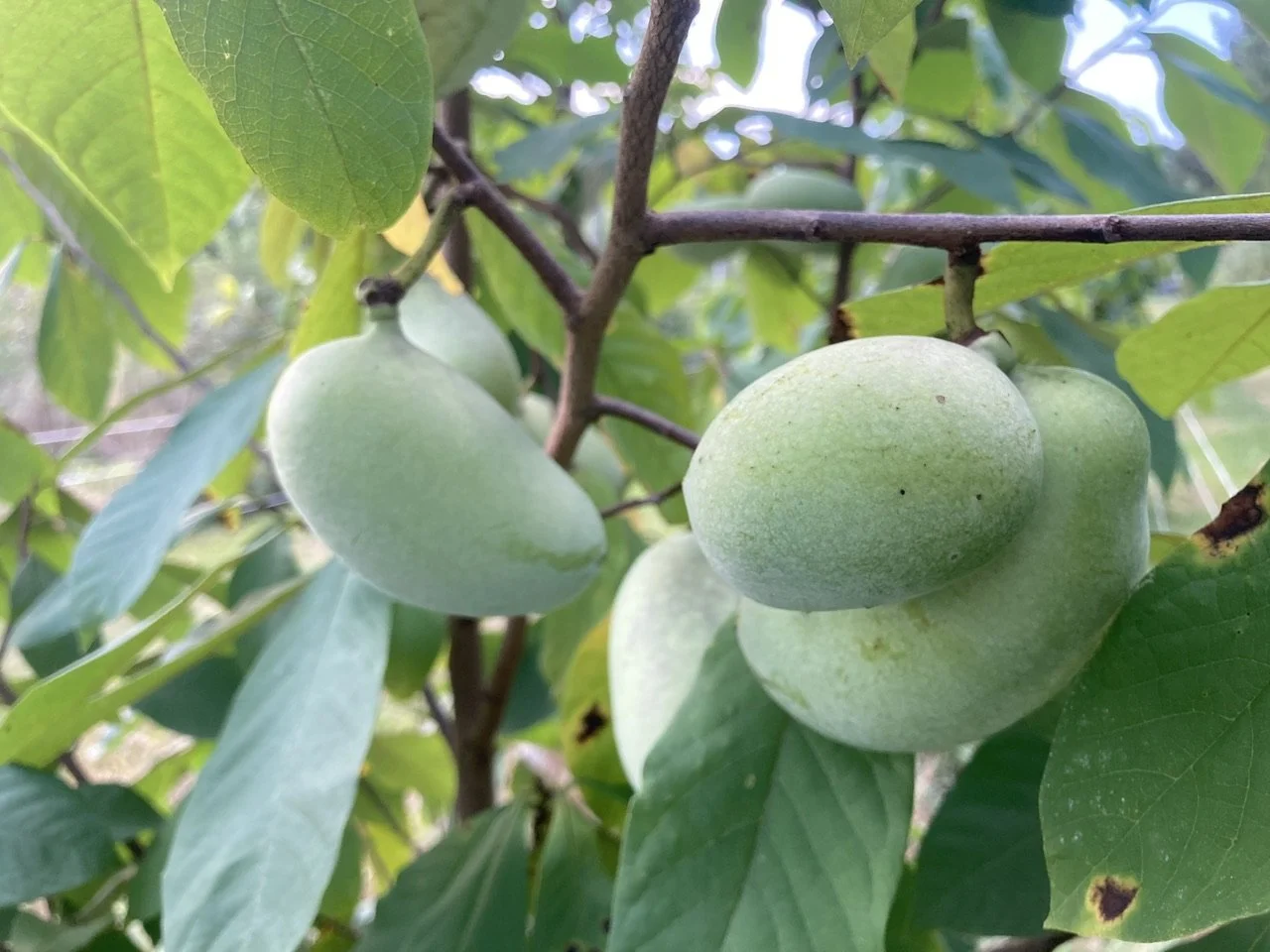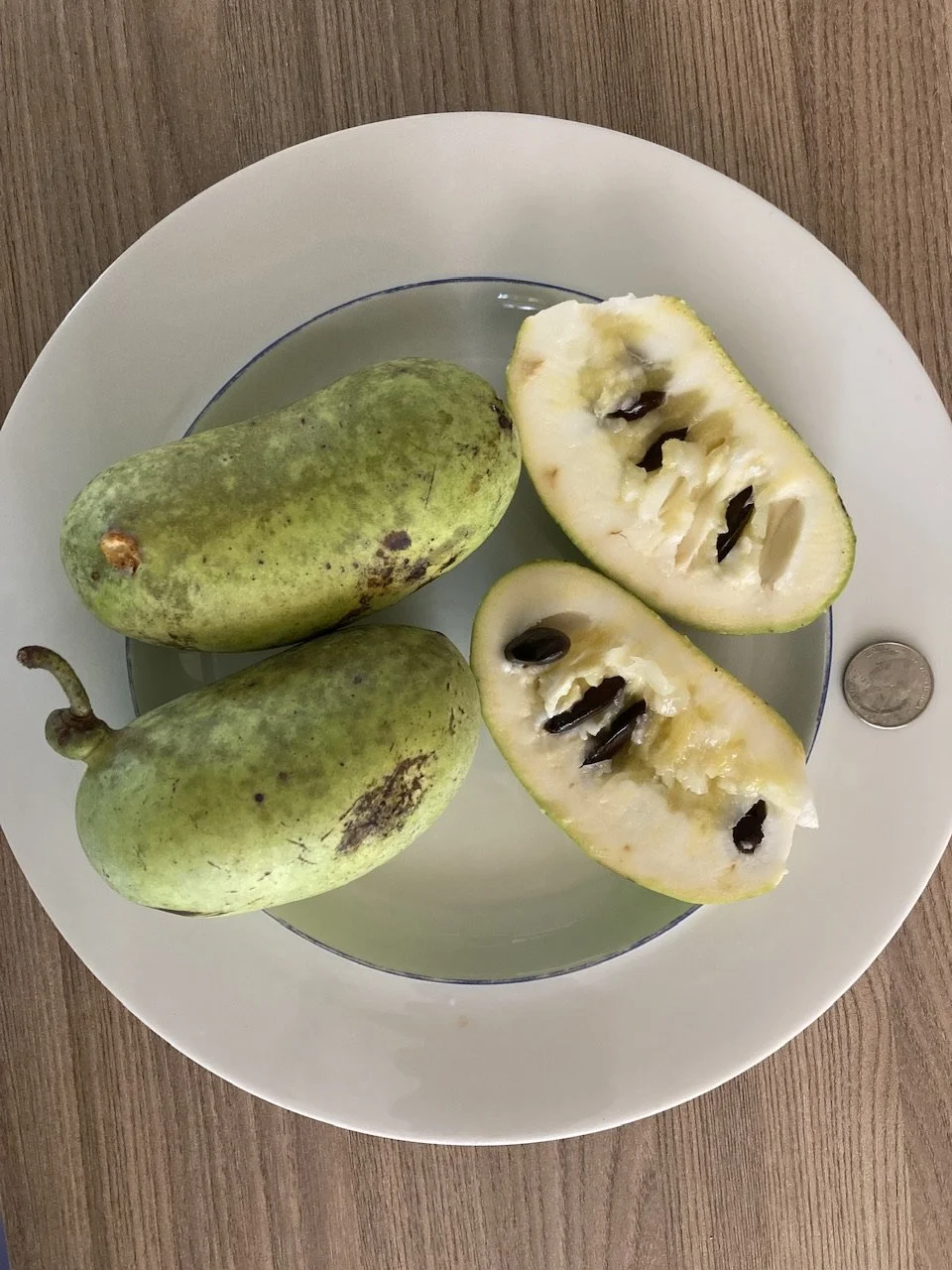Pawpaw Season
Some of you reading this are going to ask, “What is a pawpaw?”
Short answer: a fruit.
Pawpaw is the largest tree fruit native to North America. Haven’t heard of them? Read on to learn more.
Unless you’re into wild foraging, you’ve most likely never encountered pawpaw fruit since they are highly perishable and not cultivated commercially on a large scale. Most of the tree fruits encountered at the farmers market, like apples, pears, and stone fruits, originated in other parts of the world. Pawpaw’s prevalence ranges throughout the Ohio Valley east, primarily around the 40th parallel.
The fine fruit aficionados who stand in line to be first for figs have caught on that Swallowtail Farm has fresh pawpaws. Their first trees were planted in 2016 making them 7-8 years old. Approximately two dozen of those trees are now producing enough fruit for sale, but by the end of the decade over a 100 trees will be in production.
“We have planted known varieties and then select from our own seeds to continue propagation,” explained Ethan Stricker who with his wife, Anna, own a diversified, small scale farm in Mercersburg, Pennsylvania that incorporates agroforestry practices, ecological principles, and low-till methods to grow food and flowers. Ethan described the farm as a “messy orchard” as there are multiple varieties of food production trees cultivated using innovative agroforestry and organic techniques instead of traditional commercial monocrop orchards.
Although pawpaw trees were selectively bred by native Americans for centuries prior to the arrival of European colonizers, there has been so little modern breeding of the trees keeping the fruits true to seed. That means if a foraged pawpaw has desirable characteristics chances are good the seeds will yield a similar fruit producing tree.
Pawpaw trees have both male and female flowers which are a three-lobed (hence the scientific name Asimina triloba) deep burgundy color, however, two trees are required for pollination since they don’t self-fertilize. Another big difference between pawpaw flowers and those of stone fruit and pomes are who they attract for fertilization—flies and beetles. Think about the color of the pawpaw flower. Not a delicate pink or white, but a dark burgundy. What other flower has that color? I’ll give you a guess—the National Arboretum has one that always draws a crowd when it flowers. While pawpaw flowers’ scent may not be as strong as Amorphophallus titanium (corpse flower), the pawpaw’s aroma isn’t exactly one you’d consider for a perfume.
The fruits themselves range from a 3 to 6-inch oblong shape with greenish/yellowish/blackish skin and flesh the color and consistency of custard with a row of large brown seeds down the center. Fair warning, the seeds and skin are inedible. Fruits ripen in late summer to early fall. Unlike many fruits, pawpaw can only be harvested just prior to peak ripeness—soft to the touch—which makes them difficult for long distance and grocery store distribution, similar to fresh figs.
So what do you do with pawpaw fruit? With their custard-like consistency they lend well to things like smoothies, ice cream, cookies, and pies. Local brewers and distillers are using them for seasonal beers and brandies as the fruits themselves are high in natural sugars. The pulp freezes well, too.
Look for pawpaw fruit at the market during the next few weeks while they’re in season and if you can’t get to the market early enough, there’s long been a foraging tradition on the C & O Canal where wild pawpaw trees can be found.


